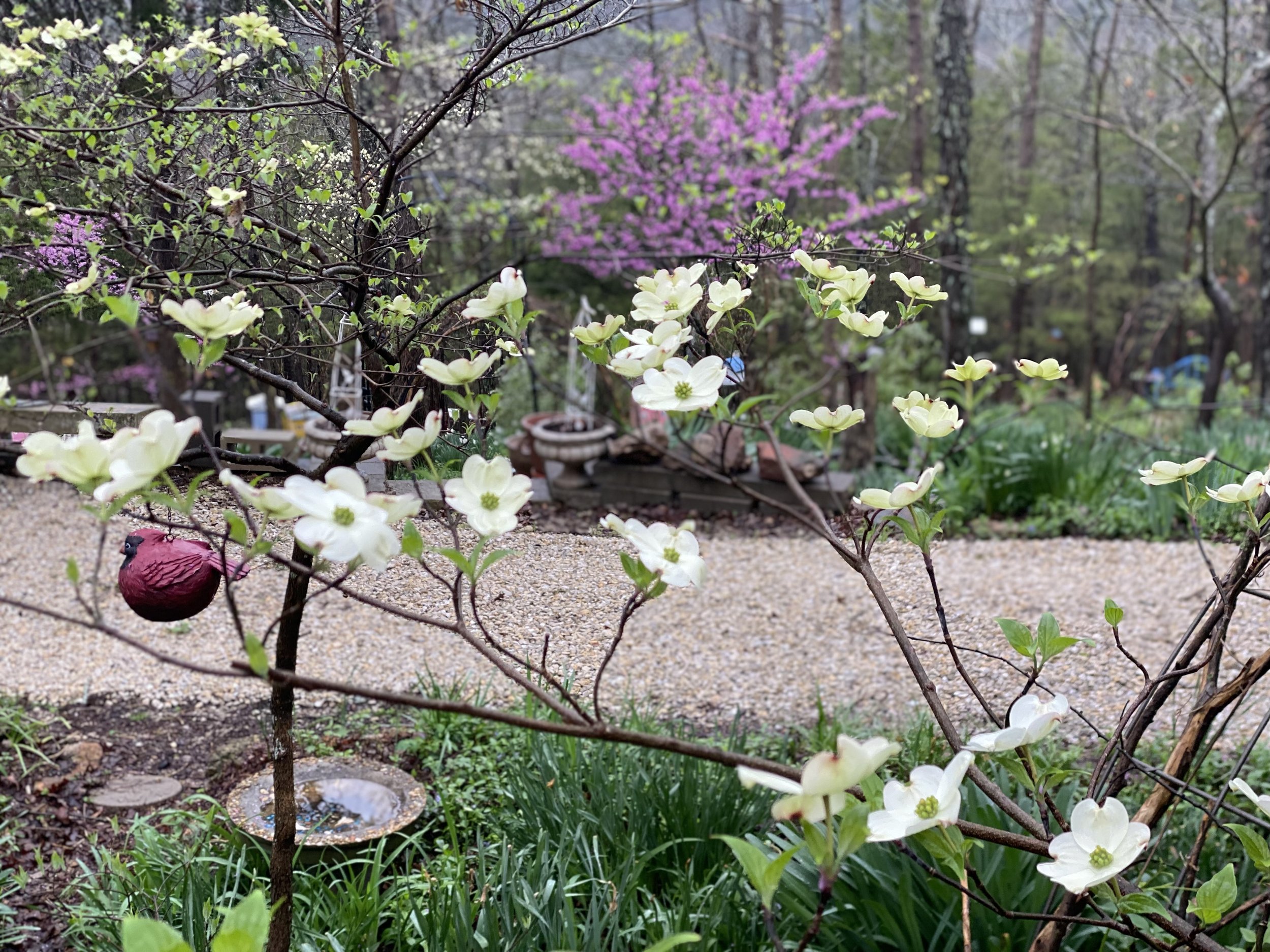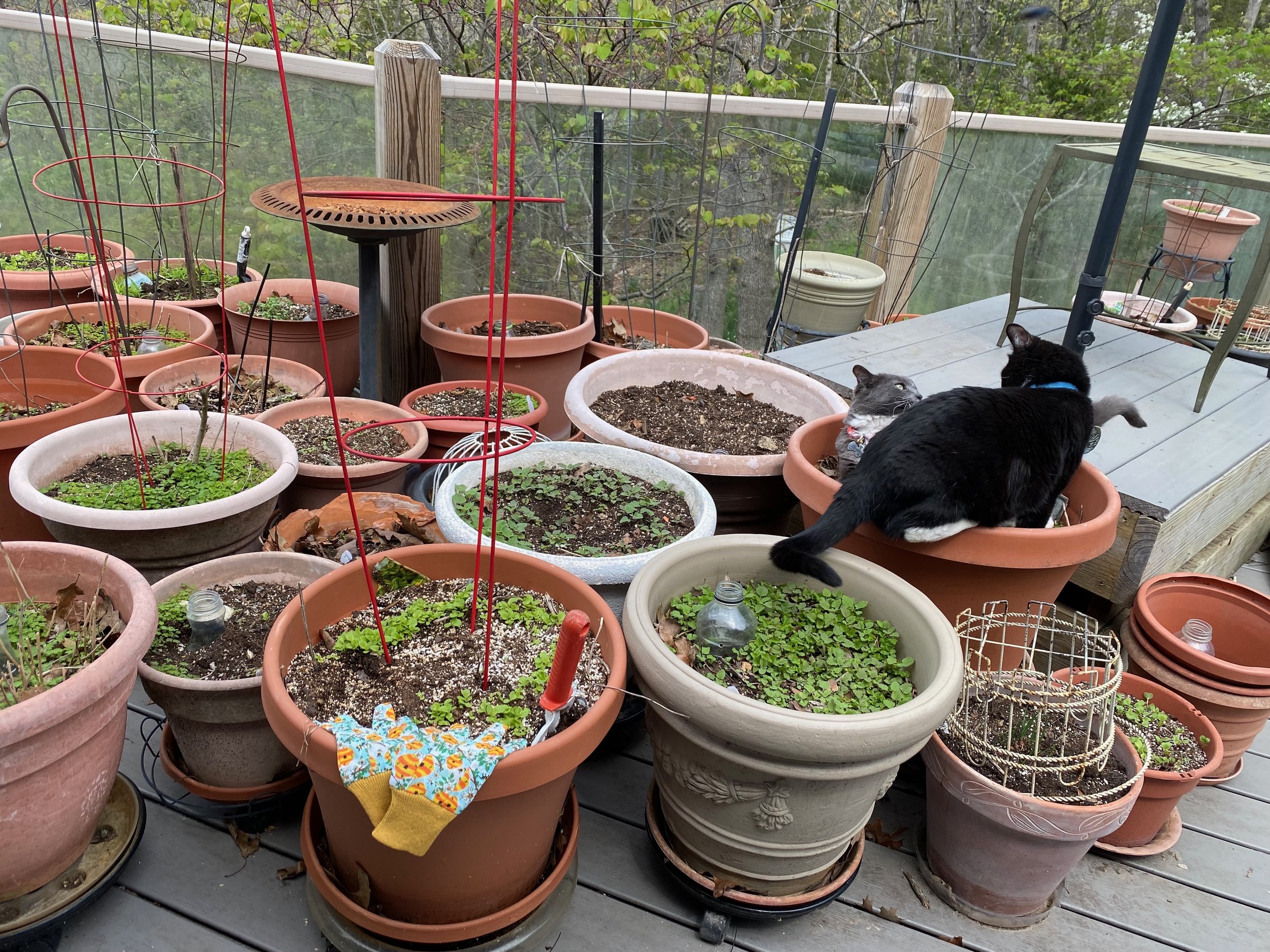Good Garden Visitors
/Opossums are good garden visitors, they keep ticks and snake populations in check.
Good Garden Visitors
As spring pops up, it’s time to welcome good garden visitors and set aside pesticides and insecticides. Although I understand those are used because they are conveniently available, most home gardeners do more harm than good. Let’s look at more environmentally friendly, and less costly, alternatives:
Birdhouses. Besides being fun to make and even more fun to add to a garden, birdhouses provide shelter to a variety of attractive garden visitors. Some birds feed larvae and caterpillars to their young and by doing so provide bug control. These homes are also good shelters for paper wasps, which are good pollinators for fruit trees. Having alternative housing also keeps paper wasps away from your house doors and windows.
Birdbaths. Add rocks and sticks to provide safe landing spots for small insects and keep the areas filled with water, especially when there are dry periods.
Provide other water areas with shallow dishes, pebble areas and sand for butterflies and other smaller insects. All living creatures need water.
Toad houses. Use old broken ceramic pots turned upside down as long as there is a space underneath that creates a cool spot for a toad to sit in. Toads like cool, damp spots and will eat more than their share of destructive insects.
Hover flies are 3/8 to 3/4 of an inch long with black and yellow stripes. Some people call hover flies sweat bees since the flies enjoy a little tasty drink of sweat periodically. However, hover flies don't sting and actually can't sting even if they had the urge. Hover fly young are ravenous predators of garden pests such as aphids, thrips and small caterpillars. The adult hover flies do not eat other insects but feed on nectar and pollen
Rehabilitate well-used bird houses by adding new holes and wire to be able to rehang them.
Plant a variety of flowers. Many predators and parasites feed on pollen and nectar or use flowers to supplement their food supply if they run low on pests. To attract the good bugs, also called beneficial bugs, add plants in the carrot family and mustard family. Use plenty of plants with small flowers such as sweet alyssum, dill, fennel, garlic chives, coriander, cilantro and white lace flower, cultivated version of Queen Anne's Lace. Other popular plants for good bugs include: blanket flower, coneflower, coreopsis, cosmos, tansy, yarrow, goldenrod, sunflowers, yellow alyssum, sweet clover, buckwheat and hairy vetch. Let a few of the broccoli plants go to flower.
Plan a season of bloom. Gardeners enjoy having flowers all season as much as the beneficial insects.
Include some permanent hardscapes such as stone paths and decorative rock. These attract lizards, part of nature’s garbage patrol. Lizards consume dead insects.
Don’t be too rushed to escort that opossum off your property. Opossums eat fruits, snakes, insects, snails, slugs, eggs, mice, rats, fish, frogs, crayfish, and carrion. They are immune to Missouri venomous snakes and, through grooming, get rid of a lot of ticks. They are also nocturnal so if you don't want to cross paths, start taking your garbage out first thing in the morning.
Charlotte













